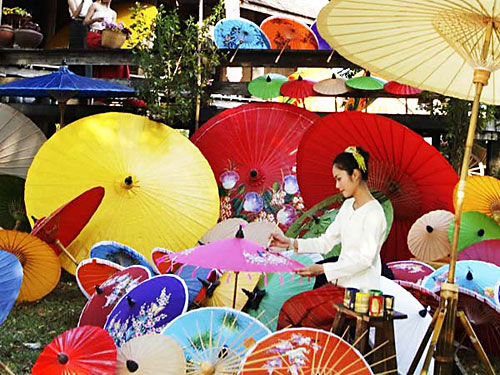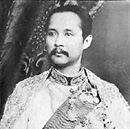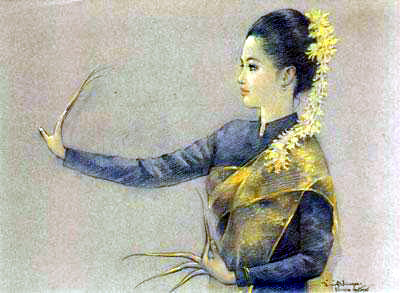|
I have always been so curious as to why the symbol of Chiang Mai women in the past was an umbrella. The northern region of Thailand is a society of mixed cultures as Thai people tried to live peacefully with foreigners. It offers beautiful geography, the charming Thai 'smile', authentic regional foods, and a traditional way of life. All of these attract Thai people throughout the country to visit at least once in the lifetime. In the time of traditional festivals and ceremonies, parents and children went to the temples in the morning. After that the teenagers might meet some friends and do some activities together. Moreover, textiles and other local handicrafts in Chiang Mai are promoted. The image of a woman in traditional dress who rode bicycles and held an umbrella in her hand became the common feature of northern Thai lady for more than hundred years
 |
Each year, good looking girls who wore northern Thai dress and held colorful umbrellas in their hands, appeared in beauty contests. This was one of the schemes to show how northern Thai people promoted tourism in Chiang Mai. At one time in the past, many men from Bangkok, who were students or employees, thought that Chiang Mai ladies were the most charming of all. Most parents of those ladies were open-minded enough to accept men who were visitors to accompany beautiful girls in the ceremonies and festivals. Of course, for modesty and beauty protection, the umbrella was an absolute requirement, very much like the fan in Japan.
The umbrella tradition is still quite strong in Thailand. There are some villages who only produce umbrellas in an artisan tradition that is passed down through generations of families. Some of these umbrella centers are world-famous.
In 1907, when the King Chulalongkorn, Rama the 5th, visited  European countries, he went to see an opera in Paris. The opera that night was called Madama Butterfly After he came back to Thailand (formerly Siam), he told the story of that opera to Prince Narathippraphanphong. The Prince was so taken with the tale, he adapted the original story into a musical play called Sao Kruea Fah. King Chulalongkorn was more than pleased with that show. European countries, he went to see an opera in Paris. The opera that night was called Madama Butterfly After he came back to Thailand (formerly Siam), he told the story of that opera to Prince Narathippraphanphong. The Prince was so taken with the tale, he adapted the original story into a musical play called Sao Kruea Fah. King Chulalongkorn was more than pleased with that show.
Sao Kruea Fah
Prom, a military officer, went to work in Chiang Mai and met Kruea Fah, a beautiful lady whom he fell in love with. They married and had a child. After that, Prom was transferred back to Bangkok but he did not bring his wife with him. Kruea Fah waited for Prom with hope and love. Unfortunately, when Prom returned to Bangkok, he remarried with a Bangkok lady whose name was Champa. Later, Kruea Fah was very excited when Prom came back to Chiang Mai but she found that he was with his new wife. Kruea Fah was devastated because her love was betrayed and she committed suicide in the end.
 |
Sao Kruea Fah is an adaptation of a short story, "The Madam Butterfly" which was written by John Luther Long in 1897 and published in the Century Magazine. Three years later the story was adapted into a stage performance by David Belasco and played in New York and in London. In London, Giacomo Puccini saw the stage play, and created an opera based on it. In 1904, Madama Butterfly premiered at La Scala. Though it initially met with a range of hostile reaction, the opera became one of his most successful and an enduring classic.
Over the past 100 years, the "Madame Butterfly" story has seen many incarnations and has become a fundamental plot of love betrayed—not the least of which is the story of Sao Kruea Fah , which was also adapted into a film. The tragic, provocative meaning of this story lingers in Thai romantic attitudes along with the umbrella under which Butterfly and Kruea Fah both faded away.
|



